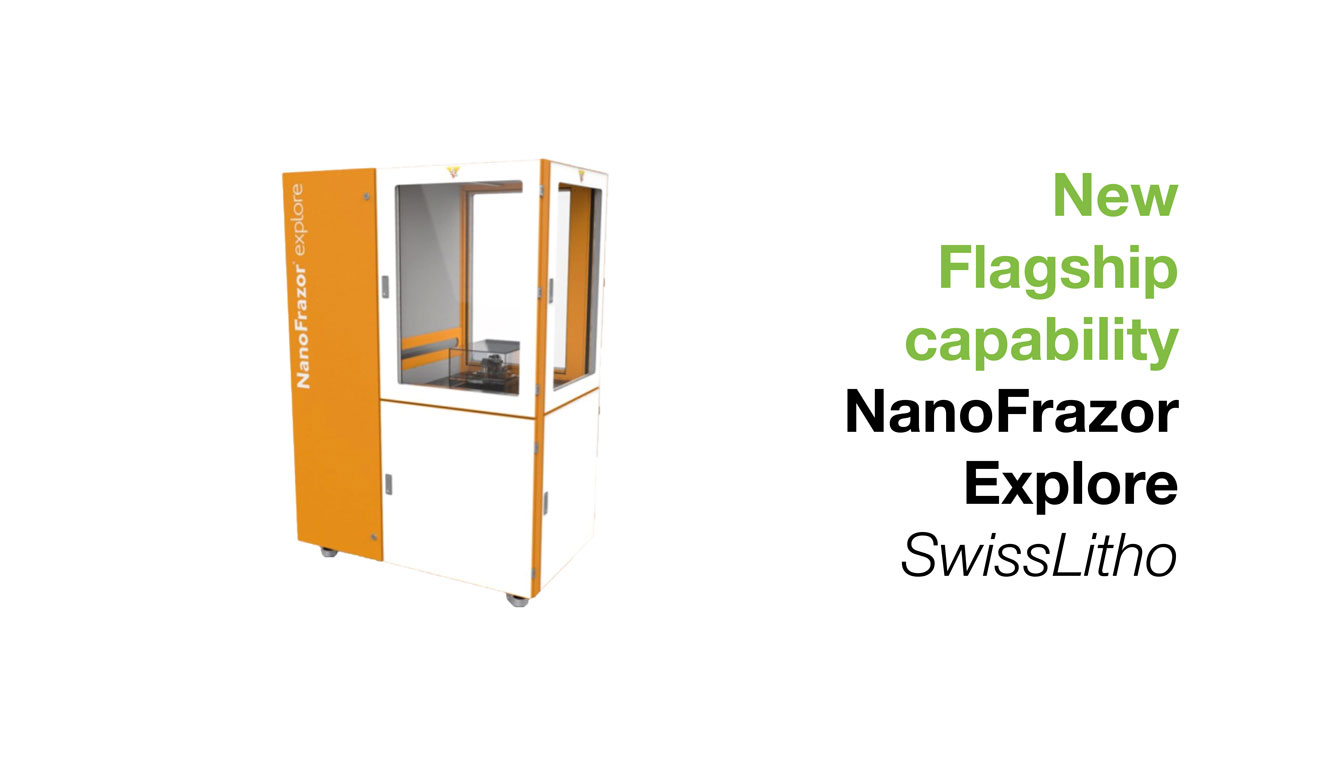New flagship tools and new capabilities across ANFF-VIC
SwissLitho’s NanoFrazor Explore is the latest addition to MCN’s capabilities list. Image credit: SwissLitho/IBM
New tools and capabilities have recently been added across the ANFF-VIC Node, notably at MCN and La Trobe’s Centre for Materials and Surface Science.
Training and introductory seminars are being planned for the new equipment so stay tuned for further announcements.
MCN has added a new flagship nanolithography tool to its arsenal, with SwissLitho’s NanoFrazor Explore.
The system uses Thermal Scanning Probe Lithography to produce micro/nanoscale structures and patterns with nanometre accuracy.
The NanoFrazor uses a scanning probe, heated to around 1,000ºC to rapidly evaporate a specialised polymer material. By varying the force applied by the scanning the probe as it writes, intricate 3D structures can be created. This allows for the fabrication of optical devices, for example, including aspherical microlenses and tapered waveguides. The technology can be harnessed for a host of potential end applications including plasmonics, nanoelectronics and storage devices to name but a few.
By allowing the heated element to cool — a process that takes microseconds — this same probe can then be used to scan the material’s surface, providing real-time information about its topography.
MCN has also increased its capabilities list with a new wedge bonder, the F&S Bondtec 5832. Suited for medium-scale production packaging, the new system is capable of fully automated wire bonding operations, using integrated pattern recognition technology. The instrument is also suitable for packages with deep-access requirements and can handle a range of wire diameters and types (including ribbon). The 5832 has a broad stage footprint of 150mm x 150mm, 100mm vertical travel of the bond head and positioning accuracy of: 300nm (Z); 2μm (XY).
ANFF-VIC’s La Trobe Hub, the Centre for Materials and Surface Science (CMSS), has installed a new sample mounting system for its XPS and ToF-SIMS surface analysis instruments.
The new system allows for far more efficient and flexible analyses, batched submission of samples, and transfer of samples between XPS and ToF-SIMS without remounting.
At the beginning of 2017, MCN added NeaSPEC’s NeaSNOM. The NeaSNOM is an atomic force microscope which is capable of performing scattering-type Scanning Near-field Optical Microscopy (s-SNOM). The s-SNOM technique allows the user to overcome the diffraction limit of conventional light microscopy or spectroscopy. This enables optical measurements at a spatial resolution of 10nm, not only at visible frequencies but also a range of mid-infrared frequencies.



